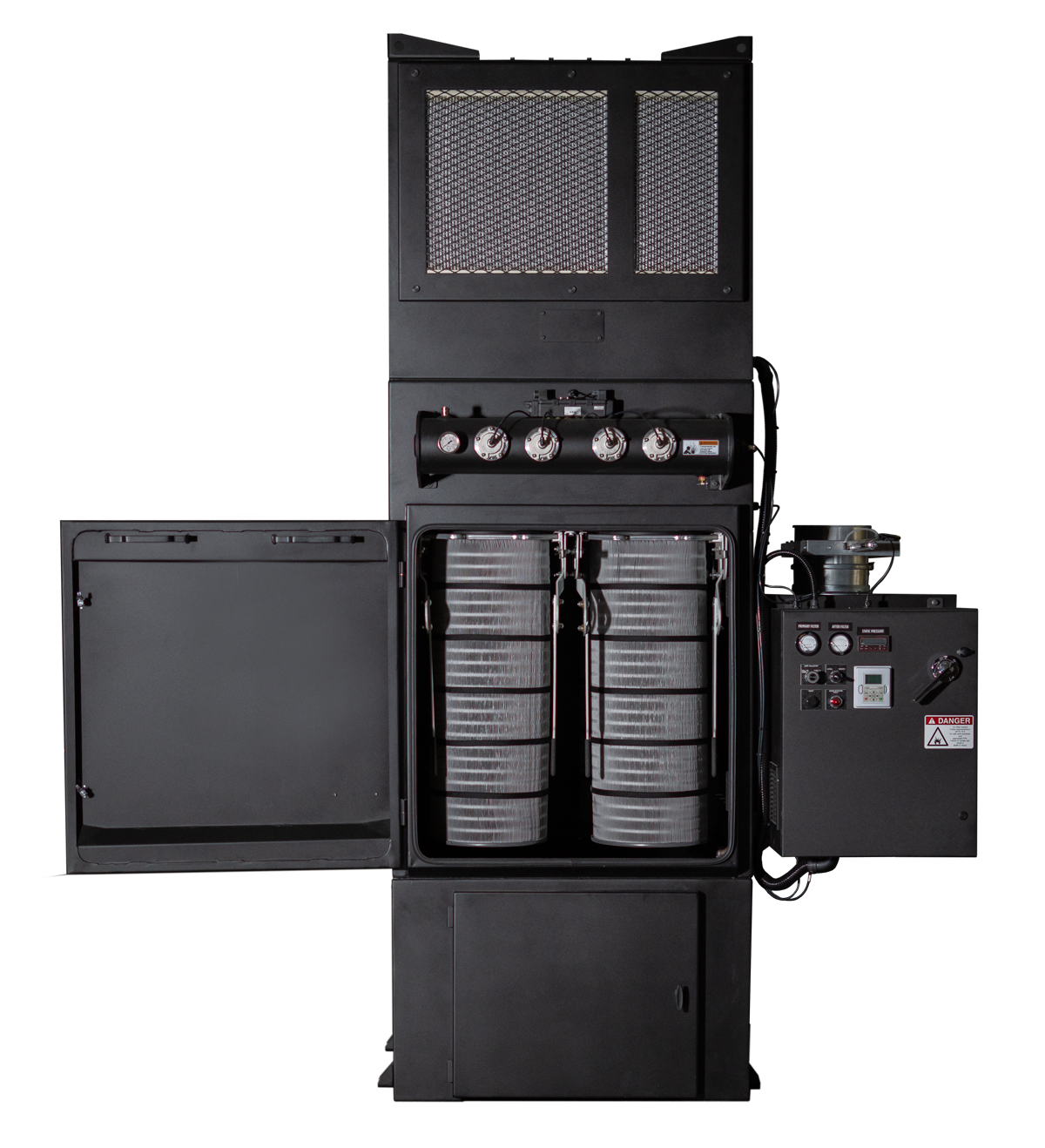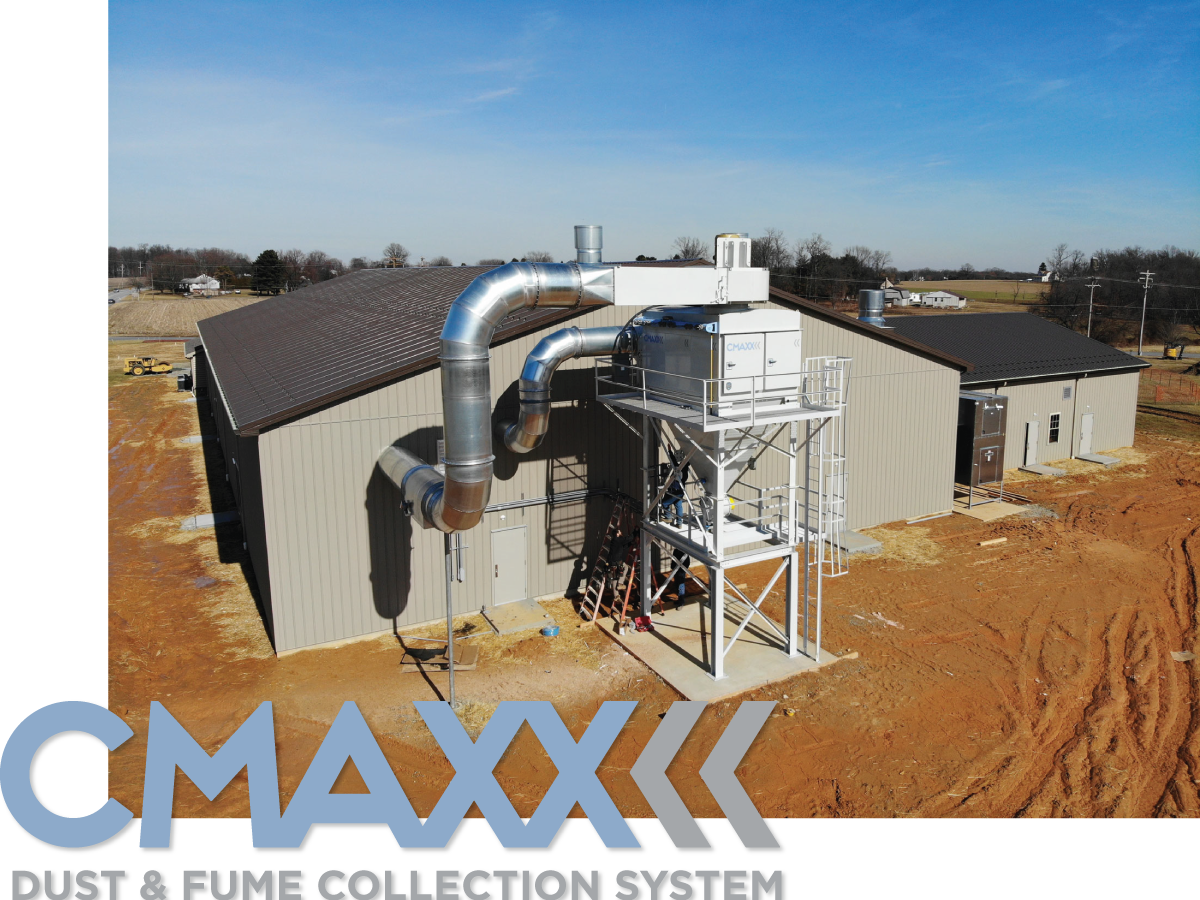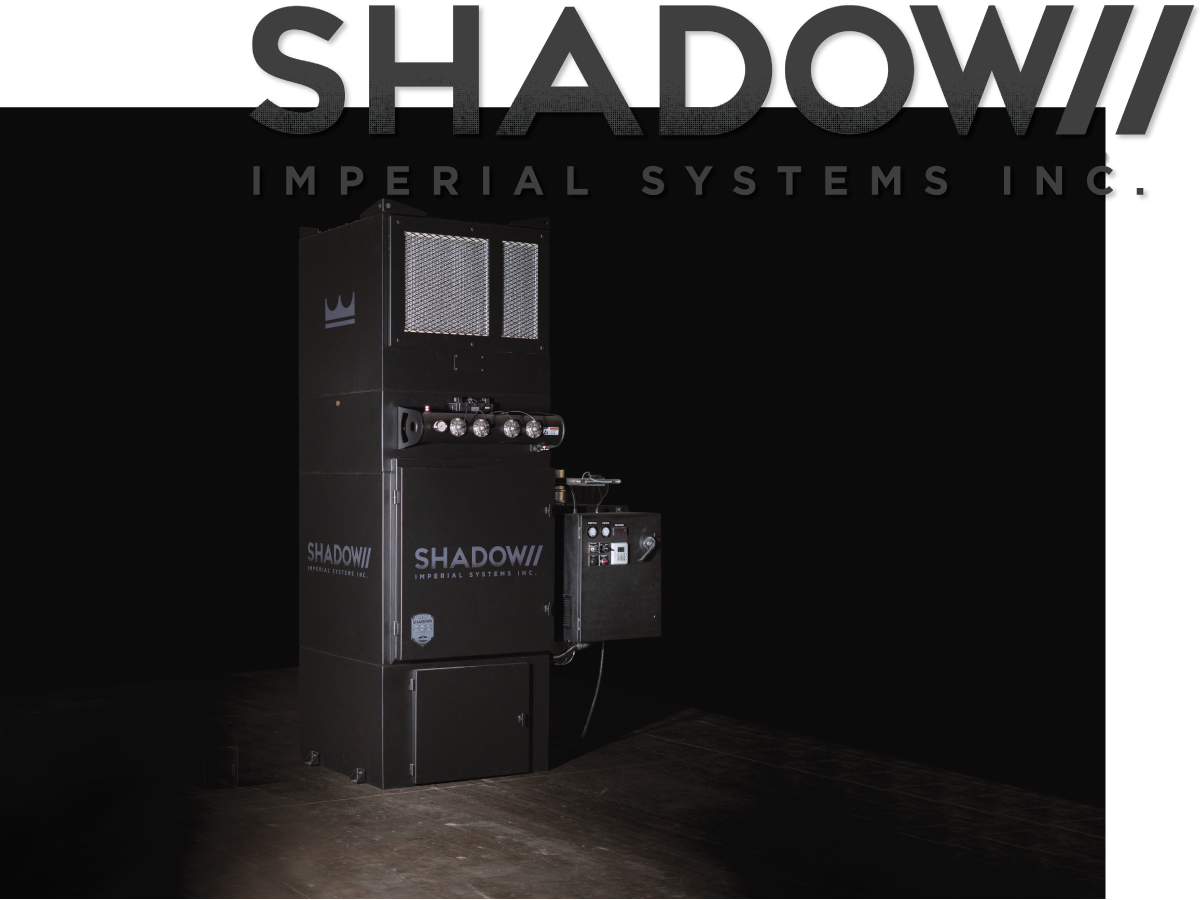Laser Cutting Fume Extraction
Laser cutting is popular for its high cutting speed and precision. Factories use it in a wide variety of applications. A CNC laser cutter vaporizes the cut material or blasts it away with a jet of gas. Because both mechanisms produce smoke and fumes, they require fume extraction.
Laser cutting methods include:
- Fusion cutting (an inert gas melts and then blasts away the material)
- Chemical degradation (use on organic material like wood that burns)
- Evaporation cutting (produces a very clean cut on plastics and acrylics)
- Thermal stress cracking (usually used on glass, which breaks along the heat-created crack)
- Oxidation or reactive cutting (often used to cut metal, since oxygen reacts with the metal to speed up the cutting)
- Oxidation or reactive cutting (oxygen reacts with the metal to speed up the cutting)
All these processes produce smoke and fumes requiring a fume extraction system. However, the exact design of the system will depend on the type of cutting process and the material being cut. Because laser cuts tend to produce fewer fumes than plasma cutting, a laser fume extractor may not need to be as large.
Laser cutting dust may or may not be combustible. If it’s not known whether the material is combustible, send a sample for testing. This will determine the fire safety features needed to meet NFPA and OSHA standards.
Gas State Lasers
These include CO2, nitrogen, and oxygen lasers. These are often used when cutting non-metals. They are less powerful but also much less expensive than solid state lasers.
Solid State Lasers
Solid state lasers use crystals or optical fibers made of special materials such as neodymium-doped yttrium aluminum garnet, or Nd:YAG. These lasers are high-powered but much more expensive to purchase and replace.
Chemical Isolation Systems
A rapid discharge of a chemical explosion suppressant prevents the flame from continuing to other ares of your dust collection system. This is best used when explosion venting is not an option.
Spark Trap
A Spark Trap creates a tortuous path that slows sparks and embers down and causes them to loose heat. This prevents sparks from entering the dust collector and creating a fire. Spark Traps are recommended by NFPA as part of a complete fire prevention system.
Rhino Drum
The Rhino Drum Explosion Tested Drum Kit is a cost efficient alternative to a rotary airlock, and can withstand an explosion up to 7 psi. With a tool free design and no moving parts, the Rhino Drum can be quickly emptied for easier maintenance.
Abort Gate
An Abort Gate is typically situated on the return air side of the dust collector and diverts clean air, sparks, and fumes. An Abort Gate can also be trigged by a spark detector or broken bag detector, preventing harmful material like fire and smoke from entering the building.
Explosion Venting
Explosion venting allows a flame front and pressure wave to escape from within a collector and dissipate into the atmosphere. Explosion vents include a burst indicator that alert in the event of a deflagration.
Explosion Isolation Valve
This system is installed on the ductwork and detects any sparks that are present in the duct. Once detected, sparks are extinguished downstream before they can continue on and cause further damage to equipment or reenter the facility.
Airlock
Our Airlocks maintain a consistent seal at the outlet of the dust collector while allowing material to continuously pass through. This seal also allows discarded material to be properly discharged, and prevents it from returning to the dust collector.



The Shadow Compact Fume Extractor fills the need for a basic fume extractor system. Its patent pending design handles weld fume extraction as well as laser fume extraction. It offers a cost effective option for managing robotic weld cell fumes. This easy to handle system can be moved around your shop. The Shadow offers the same air quality control as a premium dust and fume extractor at the lower price point.
- Fast, easy installation, no assembly required
- Pre-wired control panel – just connect power and compressed air
- Remote start capable
- Multi-directional inlet for flexible placement and installation

